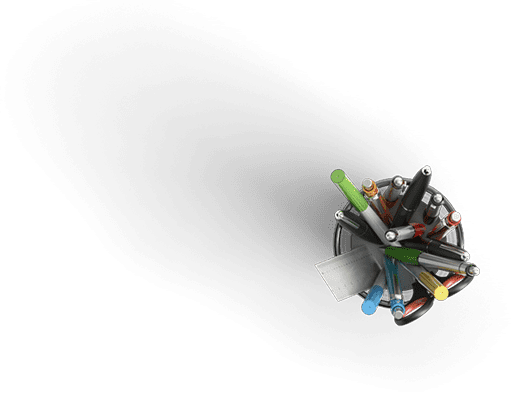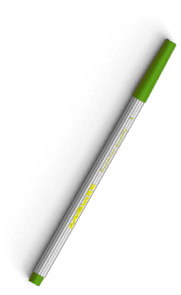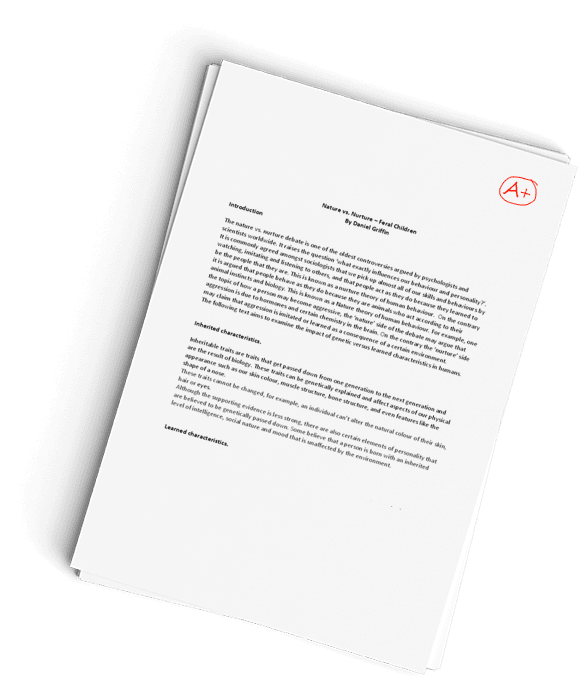GCC Asian American Women Carry the Burden of Complex Construals About Self Discussion
Question Description
Have your essential questions available to you. Write or type them out separately.
- Find academic sources, pop-culture blogs, news stories, magazine articles (I LOVE Teen Vogue), reuse our content from units 1-3. In the end, you should have the following:
- 2 different sources per question. at least 2 academic/primary sources. Use our campus library. An academic source is a source published from an academic publishing company. Our library does a great job in providing quality databases. Here are my favorites: ProQuestProQuest Research Companion (PQRC) Worldcat DiscoveryThe rest of the sources can be any source you deem credible. So before you ask me if you can use a source, I will ask you, “Do you think it’s good?”
- One restriction!!!! No Wikipedia. However, Wiki can launch you toward a source. Usually Wiki will hyperlink original sources.
- Can you change your question as you move through is process? YES!!! That’s the beauty of this activity. You can change direction because the research might send you in a different direction. Just make sure you actually change the question.
- Plan out your work. Remember that you are addressing your own essential questions using the AESC and applying 2 forms of support to back up your logic.
Some information from the unit.
CHARACTERISTICS OF STEREOTYPES
There are cognitive processes underlying stereotyping, as well as the effects of multiple social categories in impression formation.Sound complicated?Re-read this statement.There are cognitive processes underlying stereotyping, as well as the effects of multiple social categories in impression formation.
COGNITIVE PROCESSES:
Stereotypes can be seen as a set of beliefs about the personal attributes of a group of people.A stereotype is equivalent to a belief – a cognitive understanding of a group. Individually, someone makes a judgement based on what they know.How they come to terms with what they know is based on impression formations.
IMPRESSION FORMATION:
When stereotypes become a result of a collection of trait-names upon which a large percentage of people agree as appropriate for describing some class of individuals,” stereotypes focus on consensus as a defining feature of the stereotype.In other words, the stereotype forms an impression based on what a groups of people think is “true.”.A generalization made about an ethnic group, concerning trait attribution, which is considered to be unjustified by an observer propose that stereotypes are best understood as predictions that distinguish the stereotyped group from others.In other words, stereotypes are predictions that are arbitrarily created to serve a purpose of a dominant group.The process of forming an impression of a target person begins with an act of categorization, and stereotypic processing begins with categorization. Any person can be categorized on a number of dimensions, including age, sex, and ethnicity and stereotypes associated with these distinctive categories. So, who forms the impressions?It is a dynamic called The Dominant Gaze.
THE DOMINANT GAZE:
Dominant gaze describes the tendency of American popular culture/narrative/representation to objectify and trivialize the racial identity and experiences of people of color, even -when it purports to represent them. The dominant gaze subtly invites the viewer to empathize and identify with its viewpoint as natural, universal, and beyond challenge; it marginalizes other perspectives to bolster its own legitimacy in defining narratives and images.Dominant gaze functions in 3 ways: (1)in the proliferation of degrading stereotypes which serve to dehumanize ethnic minority history; lives and experiences; (2) in the marginalization or complete absence of core perspectives on lives and experiences; and (3)in the co-optation- or “Hollywood-ization – of ostensibly “racial” themes to capitalize on the perceived trendiness or fashionableness of such perspectives. In marginalizing minorities from popular discourse, the three trends frequently overlap in the context of American popular culture/narrative/representation of a group.
OBSTRUCTION OF IDENTITY
A stereotype lens constructed by the dominant gaze creates an obstruction of identity.This obstruction of identity is personified in popular culture mediums like film and television.For example, in Killing the Indian Maiden: Images of Native American Women in Film, author Judith G Curtis explains that Native American females are portrayed as sexually promiscuous, deserving of abuse from both cultures for their choices, and even responsible for their own deaths, are dangerous.In Luscious Latinas: The pros and cons of an evolving stereotype, author Valerie Menard states that “The luscious Latina role was just as denigrating at the time because the roles usually called for the Latina to be sexually easy as well.”This causes Latina actors to become limited to what they can and can not be cast in.In Reality TV plays into stereotypes ; Portrayal of black women fails to reflect real life, Maureen Ryan explains how TV desire black women to be unstable characters because they create good drama.Yet Jan Nguyen article “Breaking Through The Stereotypes explains how the goal of Asian American producers of content are trying to widen the audience for Asian and Asian-American art, and to increase understanding of it. Other goals are increased employment and educational opportunities for Asian and Asian- American women, as well changing common misperceptions.She explains the power of challenging the dominant gaze to influence the impression formation to once and for all challenge the cognitive process toward Asian American women.
INTERSECTIONALITY AND STEREOTYPES
All of the articles for week 5 will be encountering a similar barrier when dealing with stereotypes – intersectionality & stereotypes.Not only do ethnic minority women carry the burden of racial stereotypes, but they also carry the gender and sex stereotype.The situation facing women of color is more complex than that faced by White women. Chief among the causes of additional complexity is the manner in which sexism has been emphasized without consideration of other forms of stereotyping. White females, who share the same skin color as most male leaders, can more easily focus exclusively on gender stereotypes. Women of color can also face “gendered stereotypes” when they are unable to separate the individual effects of each aspect of their identities. A woman who feels that she is experiencing a stereotyped categorization must decide if this cognitive process is due to race, ethnicity, gender, or some other dimension of her identity. If the woman is disabled or lesbian, the cause of stereotype becomes even more complex. As a result of such complex attributions, women may be unsure of which aspects of their identities are responsible for the reactions of others and, as a result, may have difficulty determining an appropriate response due to stereotypes.Women who have experienced oppression that is due to multiple aspects of their identities carry the burden of complex construals about self that more privileged women do not need to bear. If a woman of color believes that she is experiencing stereotyped categorization, she must document and identify the specific form of impression formation (gender, ethnicity, or sexual orientation) in order to pursue legal redress. White women can afford to focus on gender differences, whereas women of color must often focus on all of the areas of minority difference for them and how these sources of identity influence their struggle to achieve success and feel comfortable in majority-dominated organizations.An interesting debate in the intersectionality and stereotypes is whether individuals with multiple subordinate-group identities (ethnic minority women, White lesbian women) experience more prejudice and stereotyped categorization than individuals with single subordinate-group identities (ethnic minority men or White gay men). It has been argued that androcentrism (defining the standard person as male), ethnocentrism (defining the standard person as a White American in the United States), and heterosexism (defining the standard person as heterosexual) may lead individuals with intersecting identities to be regarded as non-typical members of their group’s identity and thus cause them to experience intersectional invisibility – meaning… they are different and don’t represent the whole.
AESC TEMPLATE.
- Answer: Restate the question into a declarative sentence.
- Explanation:In your explanation, make sure that you intentionally use transitions that indicate you’re getting the information from the unit. For example, actually state, “In the unit… The unit content illustrates… As one can see in the unit…”When you explain, you need to develop and break down your answer (the re-statement of the essential question).That will usually take up to 4-6 sentences.The explanation is KEY to the overall answer. To break it down, the essential question is the question of inquiry. When you rephrase the question into a form of a statement, you have an answer. Then you are to use the unit’s content as your inspiration in developing your explanation/your logic. You have to intentionally use the unit language within your explanation. This is how you demonstrate mastery of the unit.
- Support:For your support, make sure to transition into the support by providing an introduction to the use of support before you actually quote it.When we support, it HAS TO connect with our explanation.If the explanation does not flow into the support, then it causes a fragmented answer.
- The Comment:The comment is also essential to the overall addressing of the essential question.The comment takes the reader into the mind of the reader, for the comment justified WHY the selected source was used and HOW it’s connected to the explanation.Suggestion:After you provide your support, think about HOW YOUR SELECTED SUPPORT is actually supporting your explanation by connecting the selected support AND the unit.So once again, it is vital to focus on the unit.Use the themes, ideas, concepts from the unit to comment on the selected support.
- 4. The explanation ONLY has to focus on the Unit! research!!
- 5. The COMMENTS have to ONLY focus on how the selected support is connected to the essential question!!!6. Understand that I am testing you on the UNIT research. I have to assess whether your writing reflects that read and understood the unit research.7. The required format – AESC, is a requirement! The writing has to reflect the format. Do not include an introduction and a conclusion!!! This is easier than you think.
- Use the AESC Method to answer the question. What is the AESC method? Its the Answer, Explain, Support and Comment method. It was explain in 2 videos in Hour 4 of Week 2.
- When you explain and comment, use unit language must be used and contextually relevant. When you apply unit language, make sure to BOLD your applied unit language. This is to encourage the focus on the unit.
- There is NO NEED for an introduction and a conclusion.
- Use 3 forms of support. Do not repeat your sources.
Have a similar assignment? "Place an order for your assignment and have exceptional work written by our team of experts, guaranteeing you A results."








